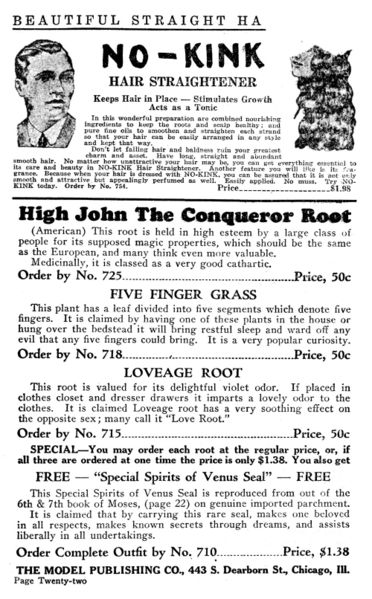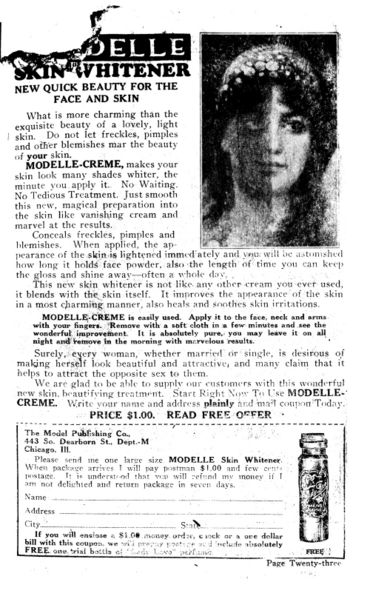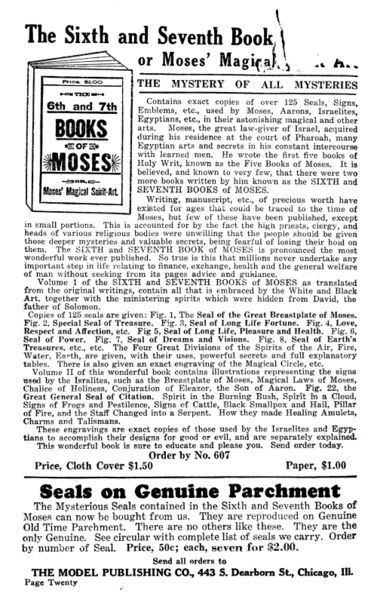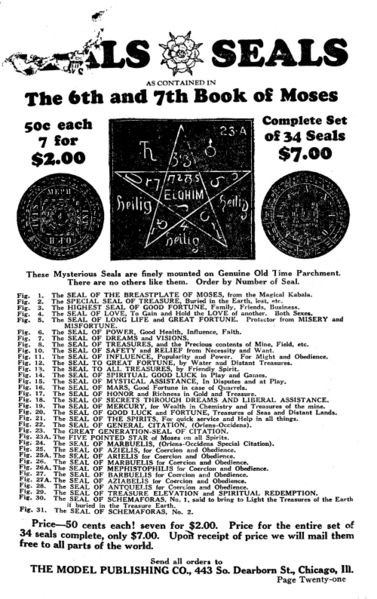Mediumship and The Afterlife
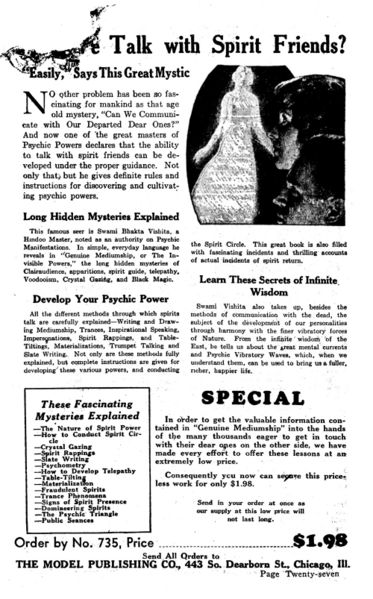 | 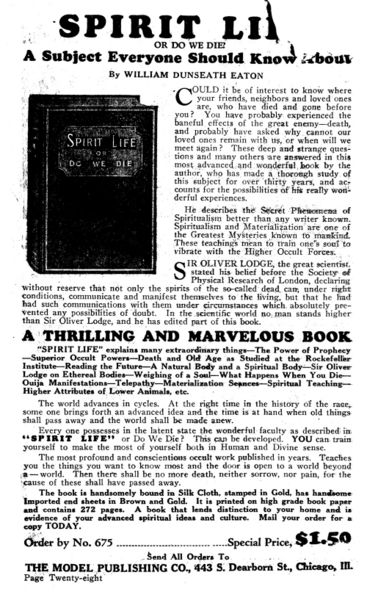 |
Two books from Model Publishing Company:
Genuine Mediumship, or The Invisible Powers
Written by Swami Bhatka Vishita, Genuine Mediumship is a basic textbook for becoming the stereotypical gypsy fortune-teller, but with a Hinduistic slant. The Swami himself did little more than write this book...although William Walker Atkinson was far more productive. The honorable Hindoo Swami credited with this book was simply a pseudonym of Mr. Atkinson, who distributed his New Thought Movement theories across numerous experts, yogis, and magni, publishing numerous volumes with similar content under different names. Atkinson's pseudonyms and books were largely printed by and distributed through Advanced Thought Publishing, a Chicago-based publisher that also produced the Atkinson-edited Advanced Thought magazine. This book is available though Project Gutenberg.
Spirit Life; Or, Do We Die?
Taking a more honest look at spiritism and fortune-telling is William Dunseath Eaton, a journalist and publisher who experienced the death of his wife during a period of curiosity in the afterlife, and recounted this period in this book as a first-hand account. Eaton does make some investigative attempts to connect the unknowns of the scientific world to the nature of the supernatural, but the majority of the book avoids pseudoscience and retains the suspicion and wonder of someone who's not ready to believe in such things yet increasingly sees evidence of the unbelievable. The book is an easy read, and probably quaint by modern standards, but the fact that it's not trying to recruit or instruct, it can be a fun read. This book is available at Google Books.
Labels: books afterlife, ghosts, seance, spiritism











